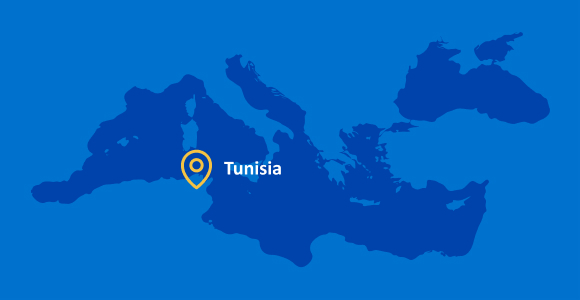Winner of the MedFish4Ever Award on innovative practices
in aquaculture research
Aquadeep
Tunisa
What is the project?
One of the most crucial yet challenging aspects of contemporary hatcheries is the ability to track aquacultural populations from day zero until the end of the production cycle. During the larval stage of most cultivated species, visibility tends to be minimal – which makes it impossible to count the exact number of larvae present in the fish basin. Most hatcheries try to get around the issue by overstocking the larval basin with larvae on the and other essentials such as food and oxygen. This though is both inefficient in production terms and can have adverse impacts on surrounding flora and fauna. Aquadeep spent three years engineering an artificial intelligence-based larva counting system capable of tracking the exact population from hatching until the end of the larval stage, thus enabling hatcheries to accurately determine mortality rates and food requirements, and operate far more efficiently. The technology is also being adapted for application to later developmental stages.



Why does this matter?
This innovation from Aquadeep is firmly aligned with the third target of the GFCM 2030 Strategy, which explicitly calls for “a sustainable and resilient [aquaculture] sector growing to its full potential.” By providing hatcheries and farms with the capability to effectively manage fish populations from the very beginning, it offers them a solution to enhance the precision of rearing techniques, decrease operational costs and boost overall productivity, all while minimizing their environmental footprint. Incorporating the latest technical advances – in this case, advanced image detection and object recognition technologies – is a crucial element in maximizing the future potential of the sector.
How is the project impactful?
Initial trials of the system – using both seabass and seabream – achieved a counting accuracy of over 95 percent, proving how effective the tool can be for daily feed monitoring and larval care. Pilot tests showed that productivity in the hatchery basins increased by about 10 percent, which indicates that continuous utilization of the system, alongside best-practice approaches in other areas, will ensure an increase in larval yield and a reduction in costs. Meanwhile, the roll-out of the project has been given a boost by the United States embassy in Tunisia, which has provided funding to support a patent application through the World Intellectual Property Organization. The second product derived from the same core technology – the juvenile fish counter – has achieved the same levels of accuracy and has reached very high processing speeds, counting up to 500 000 fish per hour in a commercial setting.
Location and possibility of replication in the GFCM area of application

Aquadeep has fostered a longstanding collaboration with L’Aquaculture tunisienne, one of the largest hatcheries in the North Africa, and all the company’s research and development activities take place at their facilities in Sousse. However, while the primary work at L’Aquaculture tunisienne revolves around seabass and seabream, the technology itself is based on datasets – which means it has great potential to be applied to other farmed species across the GFCM area of application and beyond. Aquadeep’s scope spans the Mediterranean basin and its surrounding territories including West Africa, the Middle East and North Africa (MENA) region and northern Europe.


